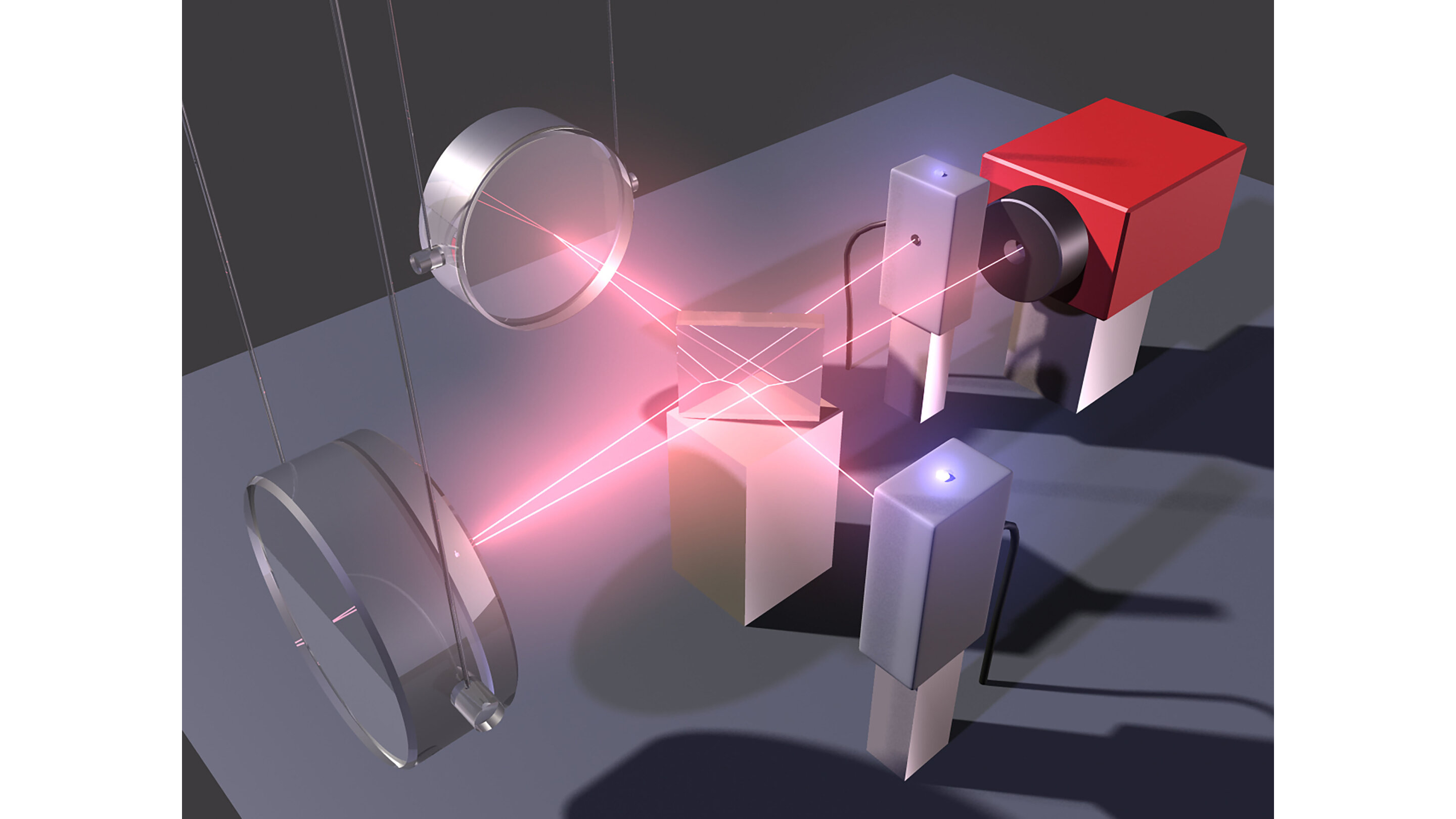博文
引力波反射实验可以演化成量子实体
||
引力波反射实验可以演化成量子实体
诸平

据美国物理学会(American Institute of Physics)2022年3月15日提供的消息,引力波反射实验可以演化成量子实体(Gravitational wave mirror experiments can evolve into quantum entities)。量子物理实验探索宏观或重体在重力作用下的运动,需要保护免受任何环境噪声和高效传感。
理想的系统是一个高反射镜,其运动被单色光感知,具有高量子效率的光电探测。如果光的量子不确定性与镜面运动相互影响,最终导致光学自由度与运动自由度之间的纠缠,则进行量子光学力学实验。相关研究结果于2022年3月15日已经在《AVS量子科学》(AVS Quantum Science)杂志网站发表—— Roman Schnabel, Mikhail Korobko. Macroscopic quantum mechanics in gravitational-wave observatories and beyond. AVS Quantum Science, 2022, 4(1), 014701. Published Online: 15 March 2022 . https://doi.org/10.1116/5.0077548. https://aip.scitation.org/doi/full/10.1116/5.0077548
上图是用于观测引力波的激光干涉仪示意图。如果光的辐射压力的量子不确定度是作用在反射镜上的主导动力,则反射镜和反射光束会产生一个普通的量子物体。在这种情况下,当测量引力波引起的反射镜位置变化时,干涉仪的灵敏度是最佳的。
在《AVS量子科学》发表的论文中,来自德国汉堡大学(Hamburg University in Germany)的研究人员将引力波探测器的研究作为量子技术的历史范例进行了回顾,并对量子物理和引力之间的联系进行了基础研究。引力波天文学需要前所未有的灵敏度来测量音频频带及以下的微小时空振荡。该团队研究了最近的引力波实验,表明可以屏蔽大型物体,比如一个40 kg重的石英玻璃镜反射200 kW的激光,使它们免受热环境和地震环境的强烈影响,从而使它们演化成一个量子物体。
上述论文的第一作者罗曼·施纳贝尔(Roman Schnabel)说:“镜子只能感知光,而光只能感知镜子。环境基本上不适合它们两个。它们共同的进化过程可以用薛定谔方程(Schrödinger equation)来描述。”
这种与环境的分离是包括量子计算机在内的所有量子技术的核心,它使测量灵敏度成为可能,否则是不可能的。
研究人员的回顾与诺贝尔奖得主罗杰·彭罗斯(Roger Penrose)在探索大质量物体的量子行为方面的工作有交集。罗杰·彭罗斯试图更好地理解量子物理学和重力之间的联系,这仍然是一个悬而未决的问题。罗杰·彭罗斯想到了一个实验,在这个实验中,光通过辐射压力与机械装置相耦合。在他们的综述中,研究人员表示,虽然这些物理学中非常基本的问题仍未解决,但反射激光的大规模设备的高度屏蔽耦合正开始改善传感器技术。
展望未来,研究人员可能会进一步探索引力波探测器与环境影响的解耦。更广泛地说,量子器件与环境中任何热能交换的解耦是关键。量子测量设备和量子计算机都需要它。
上述介绍,仅供参考。欲了解更多信息敬请注意浏览原文或者相关报道。
The existence of quantum correlations affects both microscopic and macroscopic systems. On macroscopic systems, they are difficult to observe and usually irrelevant for the system's evolution due to the frequent energy exchange with the environment. The world-wide network of gravitational-wave (GW) observatories exploits optical as well as mechanical systems that are highly macroscopic and largely decoupled from the environment. The quasi-monochromatic light fields in the kilometer-scale arm resonators have photon excitation numbers larger than 1019, and the mirrors that are quasi-free falling in propagation direction of the light fields have masses of around 40 kg. Recent observations on the GW observatories LIGO and Virgo clearly showed that the quantum uncertainty of one system affected the uncertainty of the other. Here, we review these observations and provide links to research goals targeted with mesoscopic optomechanical systems in other fields of fundamental physical research. These may have Gaussian quantum uncertainties as the ones in GW observatories or even non-Gaussian ones, such as Schrödinger cat states.
https://wap.sciencenet.cn/blog-212210-1329809.html
上一篇:MIT科学家提出了一种新的机制, 氧气可能是通过这种机制首先在大气中形成的
下一篇:纳米结构结合铜,金和银,以提高碳捕获和利用